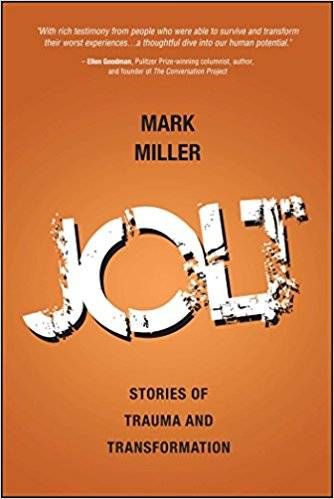How a Life Jolt Can Lead to Transformation
Which types of people see growth after traumatic life events and why
(The following is excerpted from Jolt: Stories of Trauma and Transformation by Mark Miller. Copyright 2018, Post Hill Press.)

I’ve interviewed dozens of people who are hell-bent on changing their lives and careers to focus on work with more purpose and meaning. And over the years, I began to notice a pattern: many leap-of-faith transformations begin with unforeseen traumatic life events. I came to think of these high-voltage bolts out of the blue as jolts — painful events that stop people in their tracks and then thrust them toward positive change.

Transformed by a Life Jolt
The people I interviewed for Jolt have all not only survived traumatic life jolts; they have been transformed by them, responding with courage, inspiration and dogged determination. Such jolt survivors often become more self-reliant, more fearless and bigger risk takers.
How is it that some people manage to not only survive jolts but emerge from the experience stronger in many ways? What is it like to undergo such painful, profound change? How do these transformations occur?
Psychologists have been asking some of the same questions for years. Researchers at the University of North Carolina Charlotte named the phenomenon “post-traumatic growth” in the mid-1990s; since then, post-traumatic growth has emerged as an important field of study for psychologists and social scientists alike.
What Post-Traumatic Growth Is
One of those researchers, Lawrence Calhoun, says it is important to understand that post-traumatic growth is more than mere resilience in the face of trauma. The big difference is change. “Resilience is when you get punched, stagger and then jump right back up,” he says. “Post-traumatic growth is different: When you stand back up, you are transformed.”
Jolt survivors build new lives around the traumatic event, and they move on — they build a new life outside of their pain.
Growth is fairly common. Calhoun’s research suggests that 30 to 90 percent of people dealing with trauma report undergoing at least some amount of personal growth as a result of the experience.
Who Grows After a Life Jolt?
Who is more or less likely to experience growth following a jolt? Researchers are unsure, although some think women are more likely candidates than men, mostly because women are more open about communicating their experiences and emotions.
A meta-review of research on the gender question uncovered evidence supporting a “small to moderate gender difference, with women reporting more post-traumatic growth than men.”
Age may be another predictor of growth. The meta-analysis points — with some caution — to the idea that women over age 35 are more likely to report growth following trauma. The research in this area is tentative, but the impetus to think deeply about finding purpose in life is a dominant theme in organizations like Encore.org, which focuses on purposeful career reinvention for older people.
The Jolt Impetus and Purposeful Career Reinvention
“What I’ve noticed is how prevalent the jolt impetus is in our community,” says Marc Freedman, Encore’s founder. “We see it all the time — people who have been around long enough to see that life is finite, that there are a deeper set of issues than the ones that occupy our daily lives, and that there is enough time to do something significant.”
Support from others may also be a critical factor of whether growth occurs — whether from therapists, friends, family members or the broader social community.
“One consistent finding for people who do experience post-traumatic growth is a set of circumstances that ‘rock your world,’” Calhoun says. “It causes you to confront questions you hadn’t confronted before, or see that understandings you had of the world no longer apply. People think, ‘This must have happened for some reason — it doesn’t make any damn sense to me, but I need to try to wrestle with it to find some meaning.’”
The Gift of Pain and Suffering
For jolt survivors, change begins when their framework for living is demolished by pain and suffering. Yet most regard that destruction as a gift. They have clarity of mind and purpose, and a heightened sense of compassion.
Jolt survivors who have experienced the most dramatic transformations find themselves driven by a radically expanded sense of empathy for the plight of others and a powerful urge to help.
Many jolt survivors regard their trauma as a gift of profound, valuable change. The essential “gift” of trauma is that it shakes everything up — our expectations for the future, our values and how we want to spend our time.
“Trauma is an intensifying experience,” says journalist David Bornstein, who has interviewed many jolt survivors in his work about social innovation. “It becomes virtually impossible to pursue a normal course of action, the normal pleasure of life.”


